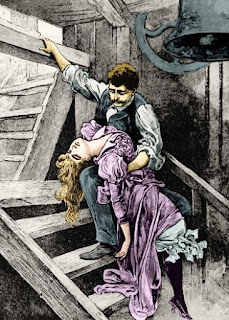This week (October 23-29) in crime history – Chechen
rebels stormed a Moscow theater taking hundreds of hostages (October 23, 2002);
Terrorists bomb US Embassy in Beirut (October 23, 1983); Marv Albert was
sentenced in sexual assault case (October 24, 1997); Susan Smith reports
carjacking to cover-up murders of her children (October 25, 1994); Shoot out at
the OK Corral (October 26, 1881); Mafia Boss John Gotti was born (October 27,
1881); Chuck Berry’s morals trial began (October 28, 1961); Crime reporter
Dominic Dunne was born (October 29, 1925)
Highlighted Crime
Story of the Week -
On October 25, 1994 - Susan Smith reports that she was
carjacked by a man who also kidnapped her two children in South Carolina.
Although law enforcement immediately began searching for three-year-old Michael
and one-year-old Alex, they could find no trace of them or of Smith’s car.
After nine days of intense national media attention, Smith finally confessed
that the carjacking tale was false and that she had driven her Mazda into the
John D. Long Lake in order to drown her children.
Both Susan and her husband, David Smith, who had had
multiple affairs during their on-and-off relationship, had used their children
as pawns in their tempestuous marriage. Apparently, Susan was involved with
another man who did not want children, and she thought that killing her
children was the only way to continue the relationship.
Ironically, Smith’s murder came to light because she had
covered her tracks too well. While believing that the car and children would be
discovered in the lake shortly after the search was started, she never
anticipated that the authorities might not be able to find the car. After
living under the pressure of the media’s scrutiny day after day, Smith buckled.
She was convicted on two counts of murder and sentenced to life in prison. In a
book David Smith later wrote about the death of his children and expressed a vague
wish to see Susan on death row because he would never be able to relax and live
a full life with her in prison.
Michael Thomas Barry is the author of eight award winning
books that includes the soon to be released California’s
Deadly Women: Murder & Mayhem in the Golden State, 1850-1950. Visit his
website www.michaelthomasbarry.com
for more information. His books can be purchased from Amazon and other fine
book sellers.










